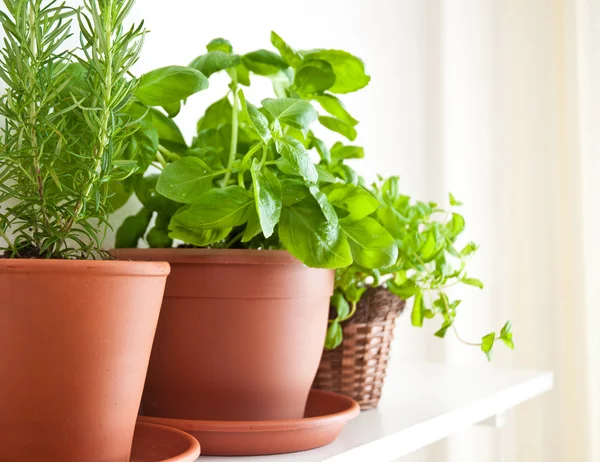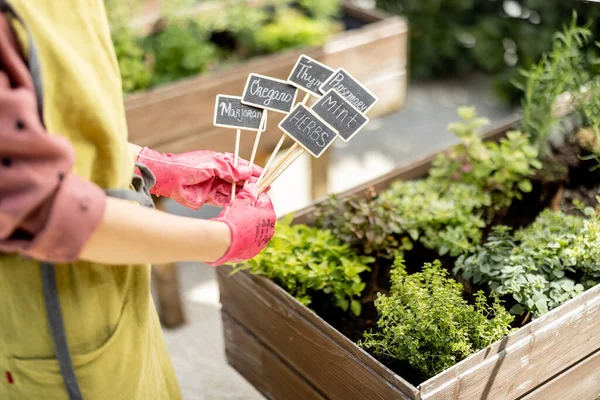The complete guide to growing aromatic herbs in pots
Introduction
Do you love the delightful aroma of fresh herbs? Imagine being able to step out onto your porch or into your kitchen and pluck a few leaves of basil or mint to enhance your dishes. Growing aromatic herbs in pots is a fantastic way to bring the beauty and fragrance of herbs into your indoor or outdoor space. Whether you have a small apartment or a spacious garden, this complete guide will provide you with all the information you need to successfully cultivate aromatic herbs in pots. Let’s dive in and explore the wonderful world of herbal gardening!
Why Grow Aromatic Herbs in Pots?
Before we delve into the practical steps of growing aromatic herbs in pots, let’s take a moment to understand why this method is so popular and beneficial.
Convenience and Accessibility
Growing herbs in pots allows you to have a mini garden right at your fingertips. You can place the pots near your kitchen window or on your balcony, making it easy to access the herbs while cooking. No need to venture into the garden or visit the grocery store; the freshness and convenience are unparalleled.
Space Optimization
Not everyone has the luxury of a large garden or yard space. With pots, you can maximize even the tiniest areas and create a beautiful herb garden. From small windowsills to vertical gardens, pots offer endless possibilities for urban dwellers and those with limited outdoor space.
Flexibility and Mobility
One of the greatest advantages of growing herbs in pots is the flexibility it offers. You can rearrange your herb garden whenever you want, experiment with different combinations of herbs, and even bring them indoors during colder months. This mobility allows you to adapt to changing weather conditions and experiment with various growing environments.
Selecting the Right Herbs
The first step to growing aromatic herbs in pots is selecting the right herbs for your garden. Consider the following factors when choosing your herbs:
Climate Compatibility
Different herbs thrive in different climates. Research the specific climate requirements of each herb you intend to grow and select those that are well-suited to your local weather conditions. Some herbs, like rosemary and thyme, prefer a Mediterranean climate, while others, such as cilantro and parsley, can tolerate cooler temperatures.
Culinary Preferences
Think about the herbs you use most frequently in your cooking. Basil, oregano, mint, and sage are popular choices that can enhance a wide range of dishes. Select herbs that align with your culinary preferences to ensure you get the most out of your herb garden.
Growth Habit
Consider the growth habits of the herbs you choose. Some herbs, like mint, tend to spread rapidly and can become invasive if not contained in a pot. Others, like chives or thyme, have a more compact growth habit, making them suitable for smaller pots or mixed container gardens.

Sunlight Requirements
Most herbs require ample sunlight to thrive. Ensure that the location where you plan to place your pots receives at least six hours of direct sunlight each day. If you have limited sunlight, consider herbs that can tolerate partial shade, such as cilantro or parsley.
Choosing the Right Containers
Once you have selected your herbs, it’s time to choose the right containers for your aromatic garden. The choice of containers can greatly influence the success of your herbs’ growth. Consider the following factors when selecting your pots:
Size and Depth
Herbs have varying root depths, so it’s important to choose pots that provide enough space for their roots to grow. Generally, pots with a depth of at least 6 inches are suitable for most herbs. However, herbs like dill or fennel may require deeper pots to accommodate their taproots.
Drainage
Proper drainage is crucial for the health of your herbs. Ensure that your pots have drainage holes at the bottom to allow excess water to escape. Without proper drainage, the roots can become waterlogged, leading to root rot and other issues.
Material
Pots are available in a variety of materials, including clay, plastic, terracotta, and fabric. Each material has its pros and cons. Clay and terracotta pots provide good breathability and drainage but may dry out quickly. Plastic pots retain moisture better but may not allow for as much airflow. Choose a material that suits your specific needs and the requirements of your chosen herbs.
Soil and Planting
Once you have your herbs and containers ready, it’s time to prepare the soil and start planting. Proper soil preparation is essential for the health and growth of your aromatic herbs. Follow these steps for successful planting:
Choosing the Right Soil
Herbs prefer well-draining soil that is rich in organic matter. You can create a suitable potting mix by combining equal parts of high-quality potting soil, compost, and perlite or vermiculite for improved drainage. This mixture provides a balance of moisture retention and aeration, ensuring optimal growing conditions for your herbs.
Planting Seeds or Seedlings
You have two options for starting your herb garden: planting seeds or using seedlings. Planting seeds allows you to experience the full growth cycle of the herbs, but it requires more time and patience. Using seedlings gives you a head start, allowing you to enjoy your herbs sooner.
Sowing Seeds
If you choose to sow seeds, follow the instructions on the seed packets regarding planting depth and spacing. Sow the seeds gently in the prepared soil, water lightly, and cover them with a thin layer of soil or vermiculite. Place a plastic wrap over the pot to create a mini greenhouse effect that promotes germination. Once the seedlings emerge, remove the plastic wrap and provide adequate sunlight.
Transplanting Seedlings
If you opt for seedlings, gently remove them from their nursery containers and place them in the prepared pots. Ensure that the soil level of the seedling matches the soil level of the pot. Gently firm the soil around the seedling, leaving enough space for watering. Water the seedlings thoroughly after transplanting to help them settle into their new environment.
Watering and Feeding
Proper watering and feeding are crucial for the growth and vitality of your aromatic herbs. Here are some guidelines to keep in mind:
Watering
Herbs in pots require more frequent watering compared to those grown in the ground. However, overwatering can be detrimental to their health. The key is to strike a balance. Water the herbs when the top inch of the soil feels dry to the touch. Use a watering can or a gentle spray nozzle to water the plants evenly, ensuring that the water reaches the roots.
Feeding
To support the healthy growth of your herbs, it’s essential to provide them with proper nutrients. You can use organic fertilizers or compost to enrich the soil. Follow the instructions on the fertilizer packaging to determine the appropriate amount and frequency of application. Be cautious not to over-fertilize, as it can lead to excessive foliage growth and reduced flavor.
Harvesting and Pruning
The joy of growing aromatic herbs in pots is being able to harvest and enjoy their flavors and fragrances whenever you desire. Proper harvesting and pruning techniques will ensure continuous growth and productivity. Here’s what you need to know:
Harvesting Leaves
When harvesting leaves, pluck them from the top, just above the leaf nodes. This encourages bushier growth and prevents the plants from becoming leggy. Be mindful not to remove more than one-third of the plant at a time, allowing it to continue thriving.
Pruning and Pinching
Regular pruning and pinching promote compact growth and prevent your herbs from becoming tall and lanky. Pinch off the tips of the branches regularly to encourage branching and fuller foliage. Pruning also helps to prevent the herbs from flowering too early, as flowering can affect the flavor of certain herbs.
Drying and Preserving
If you have an abundant harvest, consider drying or preserving the excess herbs for future use. Hang them upside down in a cool, dry place to air dry, or use a dehydrator for faster drying. Once dried, store the herbs in airtight containers away from light and heat.
Dealing with Common Pests and Diseases
Even the healthiest herb gardens can occasionally face pests and diseases. Being proactive and identifying issues early on is crucial for maintaining a thriving garden. Here are some common pests and diseases that you may encounter and how to manage them:
Aphids
Aphids are tiny insects that suck the sap from the leaves, causing them to yellow and distort. To control aphids, spray a mixture of water and mild liquid soap onto the affected plants. Ladybugs and lacewings are natural predators of aphids and can help keep their population in check.
Fungal Diseases
Fungal diseases, such as powdery mildew and leaf spot, can affect herbs grown in humid conditions. To prevent fungal diseases, ensure proper air circulation around your plants and avoid overhead watering. If an infection occurs, remove and dispose of the affected leaves and treat the plants with a suitable fungicide.
Spider Mites
Spider mites are tiny pests that feed on plant sap, causing leaves to appear speckled and discolored. Increase humidity around the plants by misting them regularly, as spider mites thrive in dry conditions. If the infestation is severe, consider using insecticidal soap or neem oil to control the population.
Enjoying Your Aromatic Herb Garden
Congratulations! You have successfully grown your own aromatic herb garden in pots. Now it’s time to reap the rewards of your hard work and enjoy the flavors and aromas of freshly harvested herbs. Incorporate them into your favorite recipes, teas, or homemade skincare products. The possibilities are endless!
Remember to continue caring for your herb garden by providing adequate water, nutrients, and sunlight. Regular pruning and harvesting will keep the herbs productive, while proactive pest and disease management will ensure their health. Embrace the joy of herbal gardening and let your senses be delighted by the wonders of nature.
Conclusion
In conclusion, growing aromatic herbs in pots is a rewarding and fulfilling endeavor. Whether you have a green thumb or are just starting your gardening journey, this complete guide has provided you with the knowledge and steps needed to create your own herb oasis. From selecting the right herbs and containers to proper soil preparation, watering, and harvesting techniques, you now have the tools to cultivate a thriving herb garden. So go ahead, get your hands dirty, and experience the joy of growing aromatic herbs in pots!



